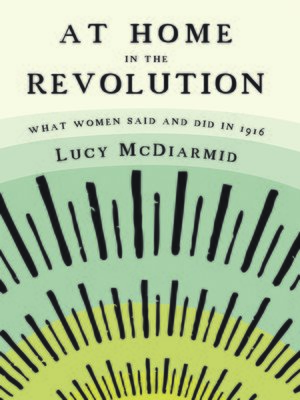
Sign up to save your library
With an OverDrive account, you can save your favorite libraries for at-a-glance information about availability. Find out more about OverDrive accounts.
Find this title in Libby, the library reading app by OverDrive.



Search for a digital library with this title
Title found at these libraries:
| Loading... |
On Monday morning 24 April 1916, Catherine Byrne jumped through a window on the side of the GPO on O'Connell Street to join the Irish revolution; Mairead Ní Cheallaigh served breakfast to Patrick and Willie Pearse, their last home-cooked meal, and then went out to set up an emergency hospital with members of Cumann na mBan; Máire Nic Shiubhlaigh persuaded Thomas MacDonagh to let her into the garrison at Jacob's Biscuit Factory; and Elsie Mahaffy, daughter of the Provost of Trinity, was in her bedroom 'completing her toilet' when her sister came in to tell her that 'the Sinn Féiners had risen.' At Home in the Revolution derives its material from women's own accounts of the Easter Rising, interpreted broadly to include also the Howth gun-running and events that took place over the summer of 1916 in Ireland. These eye-witness narratives — diaries, letters, memoirs, autobiographies, and official witness statements — were written by nationalists and unionists, Catholics and Protestants, women who felt completely at home in the garrisons, cooking for the men and treating their wounds, and women who stayed at home during the Rising. The book's focus is on the kind of episode usually ignored by traditional historians: cooking with bayonets, arguing with priests, resisting sexual harassment, soothing a female prostitute, doing sixteen-hand reels in Kilmainham Gaol, or disagreeing with Prime Minister Asquith about the effect of the Rising on Dublin's architecture. The women's 'small behaviours', to use Erving Goffman's term, reveal social change in process, not the official history of manifestos and legislation, but the unofficial history of access to a door or a leap through a window; they show how issues of gender were negotiated in a time of revolution.






